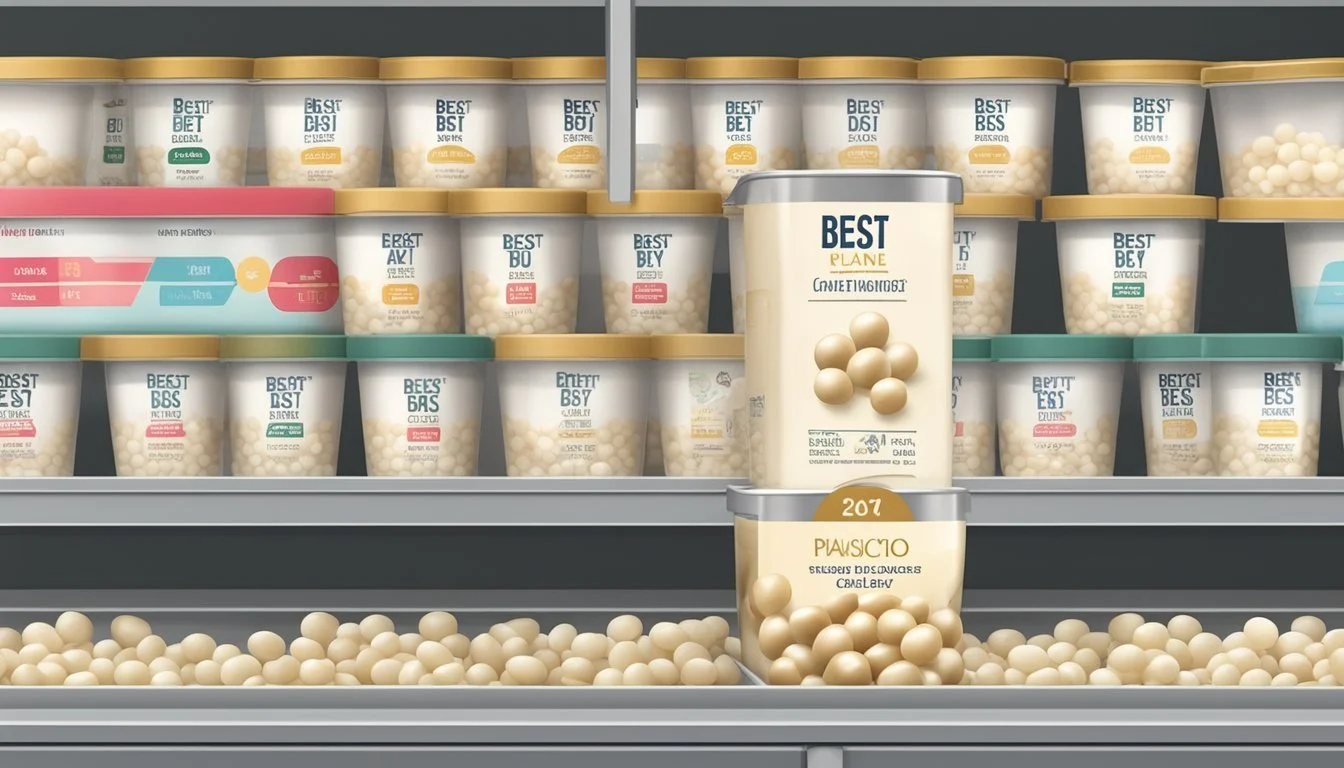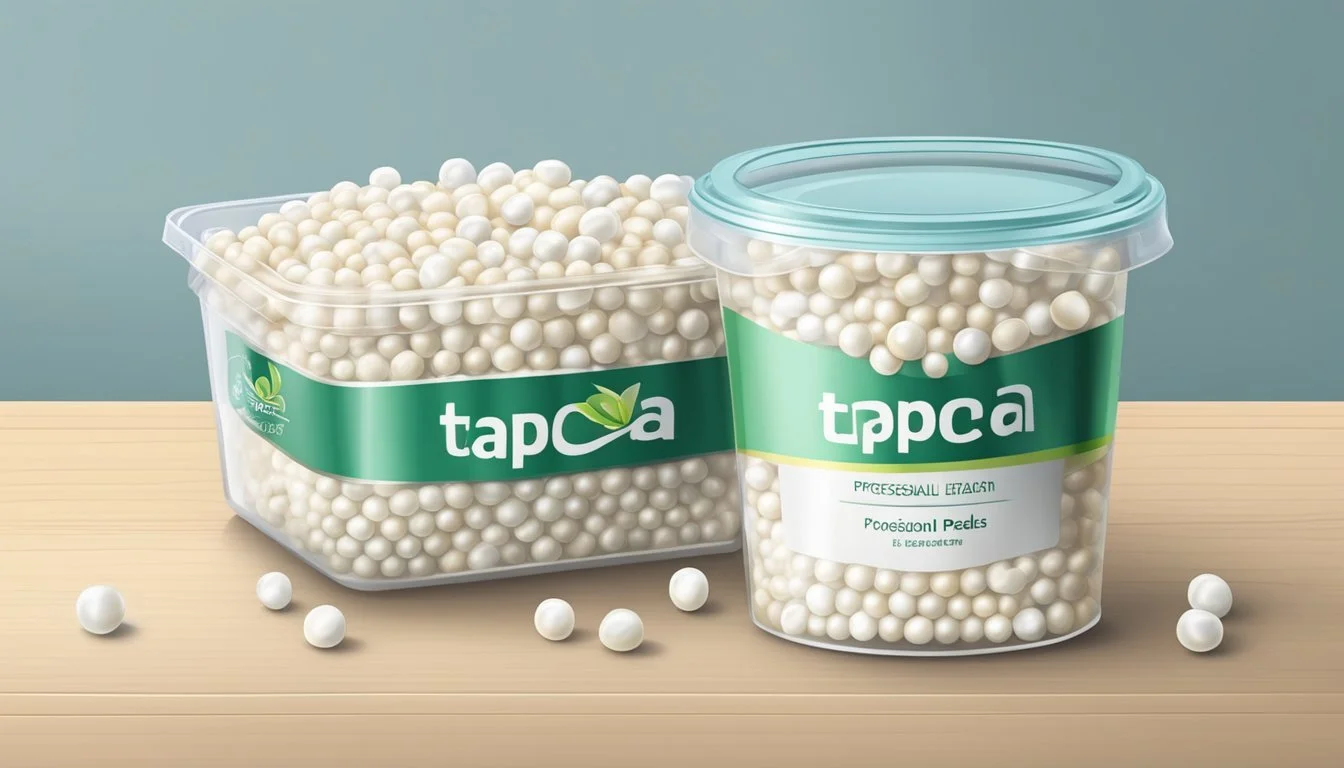How Long Do Tapioca Pearls Last?
Shelf Life and Storage Tips
Tapioca pearls, commonly known as boba, have become a global phenomenon, largely due to the widespread popularity of bubble tea. These chewy spheres derived from the starch of the cassava root are not only a key ingredient in this beloved beverage but also utilized in various desserts and snacks. Understanding the shelf life of tapioca pearls is essential for maintaining their quality and ensuring the best experience when consuming products made with them.
Uncooked tapioca pearls tend to have a considerable shelf life, which can range from six to twelve months when kept in the right conditions. To achieve this longevity, they should be stored in a cool, dry place, away from direct sunlight and moisture. Once cooked, however, their lifespan decreases significantly. Typically, cooked tapioca pearls should be consumed within a few hours of preparation to enjoy them at their peak texture and flavor.
For those who wish to store cooked boba, refrigeration in a simple syrup can extend their usability up to three to five days. Freezing is another option that can stretch their life to a couple of months. Proper storage is key to maintaining the pearls' optimal quality and ensuring that they remain an enjoyable addition to beverages and desserts.
Understanding Tapioca Pearls
Tapioca pearls, derived from tapioca starch (how long does tapioca starch last?), are key components in various desserts and drinks, such as bubble tea. They are valued for their unique texture and the role they play in culinary applications.
Origins and Production
Tapioca pearls originate from the cassava root, a starchy tuber native to South America that has become a staple in many tropical regions. The process of creating tapioca pearls involves extracting tapioca starch from the cassava root, which is then formed into the characteristic small, rounded balls. They are subsequently dried, which helps in preserving them until they are ready to be cooked and used in various recipes.
Characteristics and Uses
The primary characteristic of tapioca pearls is their chewy and gelatinous texture, which they develop after being cooked. These pearls typically appear in two colors: white and black, the latter of which is achieved by adding brown sugar or caramel coloring during production.
Tapioca pearls are most commonly used in bubble tea, also known as milk tea, where they add a chewy contrast to the sweet and creamy beverage. These pearls can also be found in a variety of desserts, ranging from puddings to sweet soups, providing a distinctive texture and appearance.
The use and enjoyment of tapioca pearls are global, with their texture and neutral flavor profile enabling a versatile range of applications in both sweet and savory dishes.
Storing Uncooked Tapioca Pearls
When it comes to storing uncooked tapioca pearls, maintaining their quality involves ensuring optimal storage conditions and being mindful of their expiration date.
Optimal Storage Conditions
Uncooked tapioca pearls should always be stored in a cool, dry place, such as a pantry or cupboard, away from direct sunlight and heat sources. It is important that they are kept in a sealed container or packaging to prevent exposure to air and humidity, which can lead to spoilage. Airtight containers are preferred to maintain freshness for an extended period.
Condition Requirement Temperature Cool (ideally room temperature or slightly below) Humidity Dry (avoid areas susceptible to moisture) Light Exposure Minimal (store in a dark environment when possible) Container Type Airtight and sealed (zip-lock bags or containers with tight lids are suitable)
Shelf Life and Expiration Date
The shelf life of uncooked tapioca pearls usually ranges from 6 to 9 months. However, always check the expiration date on the packaging for the most accurate timeframe. Unopened and properly stored tapioca pearls may sometimes remain fresh beyond the printed date, but they should be inspected for signs of degrading quality such as a hard exterior or discoloration before use.
Factor Detail Unopened Package 6-9 months (check expiration date) Storage Routine Inspect before use after long-term storage Signs of Spoilage Hardness, discoloration, or off smell
Preparing and Cooking Tapioca Pearls
To ensure tapioca pearls have the ideal chewy texture without losing flavor, precise cooking methods and timing are crucial. With simple ingredients and water, even novice cooks can achieve perfect results.
Boiling and Cooking Methods
Tapioca pearls require boiling water to cook properly. Begin by bringing water to a rolling boil in a large pot; a common ratio is 7 cups of water for every 1 cup of tapioca pearls. Once the water reaches a boiling point, slowly add the tapioca pearls, stirring gently to prevent them from sticking to each other or to the bottom of the pot.
The tapioca pearls should cook in the boiling water according to the package instructions, typically around 15 to 30 minutes for most varieties. It's vital to maintain a consistent boil and to adjust the temperature as necessary to keep it steady.
Key Steps:
Bring 7 cups of water to a rolling boil.
Add 1 cup of tapioca pearls gradually, stirring constantly.
Maintain a consistent boiling temperature.
Achieving Perfect Texture
After the initial cooking time, the pearls should be checked for the desired chewy texture. They should have a slight resistance when bitten, known as "al dente" in pasta cooking terms. If a pearl's center is still white or opaque, additional cooking may be needed.
Once the pearls are cooked, some recipes recommend letting them sit in the hot water with the heat turned off for another 10 to 15 minutes to continue to thicken and absorb moisture. Afterwards, the pearls should be drained and rinsed under cold water to halt the cooking process and remove the starchy outer layer.
For optimal texture:
Test for an al dente chewiness.
Continue cooking if centers are opaque.
Let sit in hot water, then rinse with cold water after draining.
By following these steps closely, one can ensure that the tapioca pearls are cooked to the ideal texture, ready to be used in a variety of dishes ranging from sweets to drinks.
Preserving Cooked Tapioca Pearls
Proper storage methods are critical for retaining the quality of cooked tapioca pearls. Utilizing an airtight container for refrigeration or freezing can greatly extend their shelf life.
Storing After Cooking
Once cooked tapioca pearls are cooled to room temperature, they should be promptly stored to maintain their quality. Cooling should be performed in a manner that prevents the pearls from sticking together, often achieved by rinsing them under cold running water. An airtight container is essential to prevent moisture loss and contamination.
Refrigeration and Freezing
Refrigeration: Cooked tapioca pearls can be refrigerated for up to 72 hours when stored in a simple syrup solution within an airtight container. The syrup aids in preserving the pearls' soft texture.
Fridge Lifespan: Up to 72 hours
Freezing: For long-term preservation, freezing is a viable option. Cooked tapioca pearls can be frozen for up to three months. To use frozen pearls, one should thaw them and then reheat in boiling water until they regain the desired consistency.
Freezer Lifespan: Up to three months
Storage Method Container Lifespan Refrigeration Airtight, syrup Up to 72 hours Freezing Airtight Up to 3 months
It's important to note that cooked tapioca pearls should not be left at room temperature for more than 4 hours to avoid spoilage.
Recognizing Spoilage
When tapioca pearls expire, they often exhibit signs that should prompt consumers to discard them. Recognizing these signs is crucial to ensure the pearls are safe for consumption and to avoid potential health implications.
Signs of Expired Tapioca Pearls
Expired tapioca pearls can be identified through several distinct indicators:
Discoloration: Pearl's color changes, which could indicate mold growth or spoilage.
Mold Presence: Any visible white spots or fuzzy growths on the surface of the pearls.
Odor: An off-smell, sour or musty, can indicate that the tapioca pearls have gone bad.
Texture Change: They might become exceptionally hard or, conversely, too mushy, depending on the impact of moisture and other environmental factors.
Health Implications
Ingesting expired tapioca pearls can lead to food-related illnesses. Spoiled food can host pathogenic bacteria, leading to symptoms such as:
Gastrointestinal discomfort
Food poisoning
It's essential to inspect tapioca pearls both before and after their stated expiration date to ensure they remain safe to consume. If any sign of spoilage is detected, it's best to err on the side of caution and dispose of the pearls to avoid health risks.
Additional Uses and Variations
Tapioca pearls, known for their role in bubble tea, have various applications in cooking. They can be used as a thickening agent or a dessert base in different culinary traditions.
Tapioca in Different Culinary Preparations
The versatility of tapioca pearls lies in their ability to adapt to various dishes. In their traditional form, tapioca pudding is a classic, comforting dessert often made with milk, sugar, and tapioca. Chefs sometimes substitute white sugar with brown sugar or honey to add depth to the flavor profile. On the savory side, tapioca pearls serve as a thickener in pies or stews, providing a gluten-free alternative to flour.
DIY Boba and Creative Ideas
For bubble tea enthusiasts, making homemade boba is a rewarding process. One starts by boiling the pearls and then mixing them with a sweetener like honey or a homemade brown sugar syrup, ensuring each pearl is well coated. Creative variations of bubble tea can include using different types of tea, such as green or black, or incorporating fruit-infused teas. Similarly, tapioca pearls can be added to fruit salads for a surprising texture or used as a topping for ice cream and various other desserts.
Tips and Best Practices
Ensuring the freshness and safety of tapioca pearls involves proper storage and handling. Below are specific guidelines on how to maintain their quality throughout their shelf life.
Proper Handling and Safety
When dealing with tapioca pearls, it is crucial to handle them in a way that prevents contamination and preserves their safety for consumption. They should always be stored in a cool, dry place to avoid moisture and dampness which can lead to spoilage. When preparing tapioca pearls, hands should be clean, and utensils should be sterilized to prevent any foodborne illnesses.
Avoid Heat Exposure: Store away from heat sources to prevent deterioration.
Prevent Air Exposure: Keep them sealed when not in use to reduce the risk of them becoming stale or hard.
Maintaining Quality During Storage
The quality of both uncooked and cooked tapioca pearls can be retained with proper storage tactics.
Uncooked Tapioca Pearls: They should be kept in an airtight container to prevent exposure to air and moisture. When stored correctly, they can last up to two years.
Storage Environment Shelf Life Original Packaging 6-9 months Airtight Container Up to 2 years
Cooked Tapioca Pearls: They have a significantly shorter shelf life and should be consumed quickly. Cooked pearls can be stored at room temperature for a limited time, in the fridge with simple syrup to extend their freshness to 72 hours, or frozen for longer periods. Always check for signs of spoilage before use.









